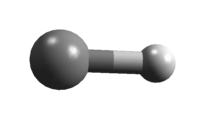|
Considerable changes were made in the transition frequency set
of CH with respect to the first two entries from Mar. 2000
and Sep. 2006, respectively. As usually, only the most accurate
data were retained for transition frequencies reported with
microwave accuracy. The parameter set is identical to
the previous CDMS entry and was cited and used
in
(1) M. A. Martin-Drumel, O. Pirali, D. Balcon,
P. Bréchignac, P. Roy, and M. Vervloet,
2011, Rev. Sci. Instrum. 82, Art. No. 113106.
Several far-infrared transitions were reported in that work.
The hyperfine parameters were greately improved through the
Λ-doubling transition frequencies from
(2) S. Truppe, R. J. Hendricks, S. K. Tokunaga, E. A. Hinds,
and M. R. Tarbutt,
2014, J. Mol. Spectrosc. 300, 70.
Further Λ-doubling transition frequencies were
reported by
(3) M. C. McCarthy, S. Mohamed, J. M. Brown, and P. Thaddeus,
2006, Proc. Nat. Acad. Sci. 103, 12263;
by
(4) M. Bogey, C. Demuynck, and J.-L. Destombes,
1983, Chem. Phys. Lett. 100, 1055;
and by
(5) C. R. Brazier and J. M. Brown,
1983, J. Chem. Phys. 78, 1608.
Two hyperfine components of the ground state spin-flip
transition near 533 were reported by
(6) S. Truppe, R. J. Hendricks, E. A. Hinds, and M. R. Tarbutt,
2014, Astrophys. J. 780, Art. No. 71.
In combination with (2), the hyperfine components near
537 GHz are constrained about 100 kHz lower than
initially reported. Mostly rotational transitions were
reported by
(7) S. A. Davidson, K. M. Evenson, and J. M. Brown,
2001, Astrophys. J. 546, 330.
Microwave transitions with uncertainties of 100 kHz or more
as well as the FIR transitions were not merged.
CH is well described by Hund's case (b), and
the constants used in the fit are essentially those of (2).
Since CH is not particularly rigid, the predicted uncertainties for
transitions involving higher quantum numbers should be viewed somewhat cautiously.
The dipole moment was taken from
(8) D. J. Phelps and F. W. Dalby,
1966, Phys. Rev. Lett. 16, 3.
|
